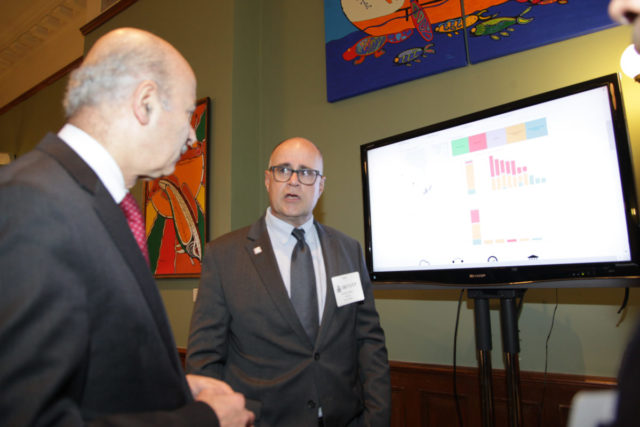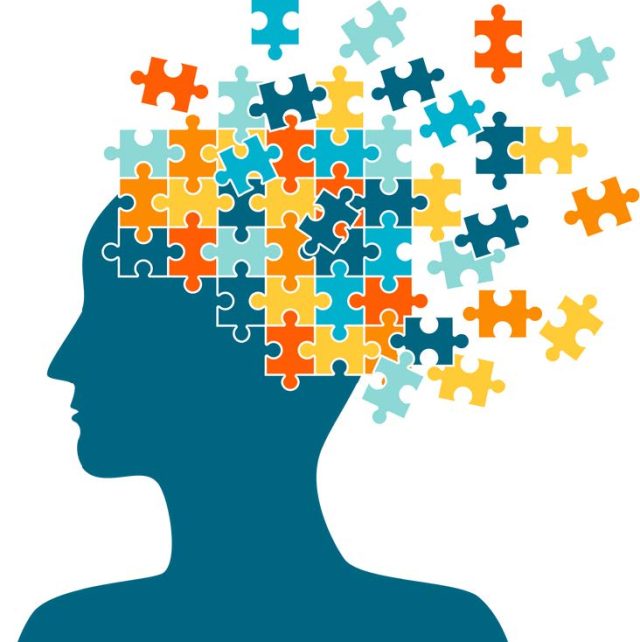The Ontario Brain Institute (OBI) builds collaborations between Ontario neuroscientists so that they can combine their diverse expertise and resources to better understand brain disorders and translate these discoveries into new tools and treatments.
In the era of big data, researchers need a digital nerve centre to share, combine, analyze, and compare their data. This is why OBI built Brain-CODE, its neuroinformatics and analytics platform, as an engine to drive research collaboration. Brain-CODE connects people across distances, disorders and disciplines in an ‘Integrated Discovery’ approach to research; it allows them to share and combine multiple types of standardized data collected from different brain disorders and to study disorders in a new light. It offers researchers a chance to build an in-depth understanding of the biology underlying complex brain disorders, which can inform the development of better tools and treatments, personally tailored to the unique biology of each person.
Today, Brain-CODE represents an unprecedented level of collaboration, with 240 researchers across 40 Canadian institutions contributing and sharing standardized data. Brain-CODE provides a space for brain scientists to collect, analyze, compare data and generate novel insights through a secure digital platform. An added benefit included in the design of Brain-CODE is its ability to federate and link with other databases, allowing for greater opportunities to collaborate.
From Brain-CODE’s inception, OBI has worked with the Information and Privacy Commissioner of Ontario to design a highly secure platform, maximizing both data sharing potential and participant privacy. OBI was the first research institute given the Privacy by Design ambassador designation by the Information and Privacy Commissioner of Ontario for adhering and committing to a rigorous framework of data privacy and security.
The design and potential of Brain-CODE has led to international research collaborations. OBI has signed a federation agreement with the National Institute of Mental Health’s (NIMH’s) National Database for Autism Research (NDAR) allowing scientists to mine a large and diverse data set of behavioral, brain imaging, and other research data to study and better understand autism spectrum disorder. OBI is the one of the first organizations outside of the U.S. to sign a data federation agreement with NDAR.
Brain-CODE also provides a unique opportunity to link deep, comprehensive research data with broad, population-level health administrative data to better understand brain disorders. Many disparate research, clinical, and population data sets exist, but few are able to be linked. OBI has partnered with the Institute for Clinical Evaluative Sciences (ICES) to solve this issue, starting with three data federation projects on autism, epilepsy and stroke. These partnerships will create an opportunity for exciting new research tracking the development of diagnoses, treatment responses, and other long-term outcomes. Recognized by international organizations, such as the Organization for Economic Cooperation and Development (OECD), as having tremendous potential healthcare impacts, these research capabilities will allow for research that will have impacts on care in the clinic and in the community.
OBI has taken another important step toward faster research discovery and health impacts by releasing its first open dataset. These data were collected by a POND research team at the Hospital for Sick Children, led by Dr. Jason Lerch, and includes high-resolution magnetic resonance (MR) imaging from 31 mouse models of autism, representing 23 genotypes of 90+ mouse strains. Drs. Jason Lerch, Jacob Ellegood, Mark Henkleman, Jane Foster and their teams collaborated with multiple national and international research groups to collect MR images with genetic mutations that are known to be associated with autism. These data will help researchers explore how autism affects the brain and accelerate the discovery process leading to better treatments and improved health impact.
To date, Brain-CODE has 15,878, records in total: 14,348 human records and 1,530 animal records across its five principal research areas, cerebral palsy, depression, epilepsy, neurodegenerative disorders (like Alzheimer’s disease), and neurodevelopmental disorders (like autism), as well as housing datasets from other research studies. Each of these records contain a deep amount of information such as MR images, clinical assessments, and genetic data, which help to provide a comprehensive picture of these disorders and relationships between them. As these data move through the process of data collection, analysis, publication and open data release, the possibilities for the impact of this comprehensive data will multiply exponentially.
Central to Brain-CODE’s success is its secure design and the ability to strategically handle the many types of data and analytics needed by researchers to collaborate and discover. Brain-CODE’s design was recently recognized by the Centre for Addiction and Mental Health (CAMH), who established a centralized database powered by Brain-CODE for research conducted at the institute. Nothing else on the market was comparable to meet CAMH’s neuroinformatics needs, exemplifying the unique potential of Brain-CODE. The adoption of Brain-CODE at CAMH is not the adoption of software alone, but also of OBI’s ideology. This potential is recognized by one of OBI’s Advisory Committee members, Dr. Sean Hill – a world leader in informatics, who previously worked as co-director of Blue Brain Project in Switzerland. Dr. Hill was recently recruited as the inaugural director of the Krembil Centre for Neuroinformatics at CAMH. OBI is working closely with the Krembil Centre to use data and informatics to have real world impact.
The fundamental purpose of Brain-CODE is not to refine data management, but to accelerate collaborative research efforts and its translation to improve the lives of people living with brain disorders. Through its design and infrastructure, it has become the engine that allows for this extensive integration and collaboration between researchers to share insights and have greater collective impact. This integration across disciplines gives researchers a digital playground for discovery, while open data sharing allows for the multiplication of research impact.



